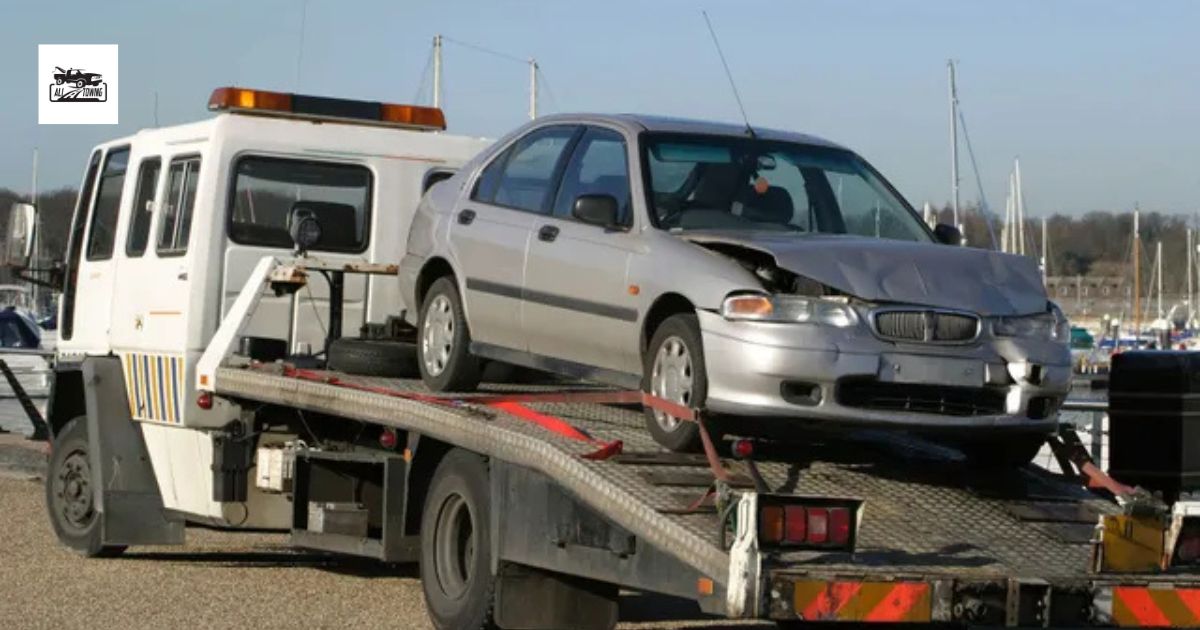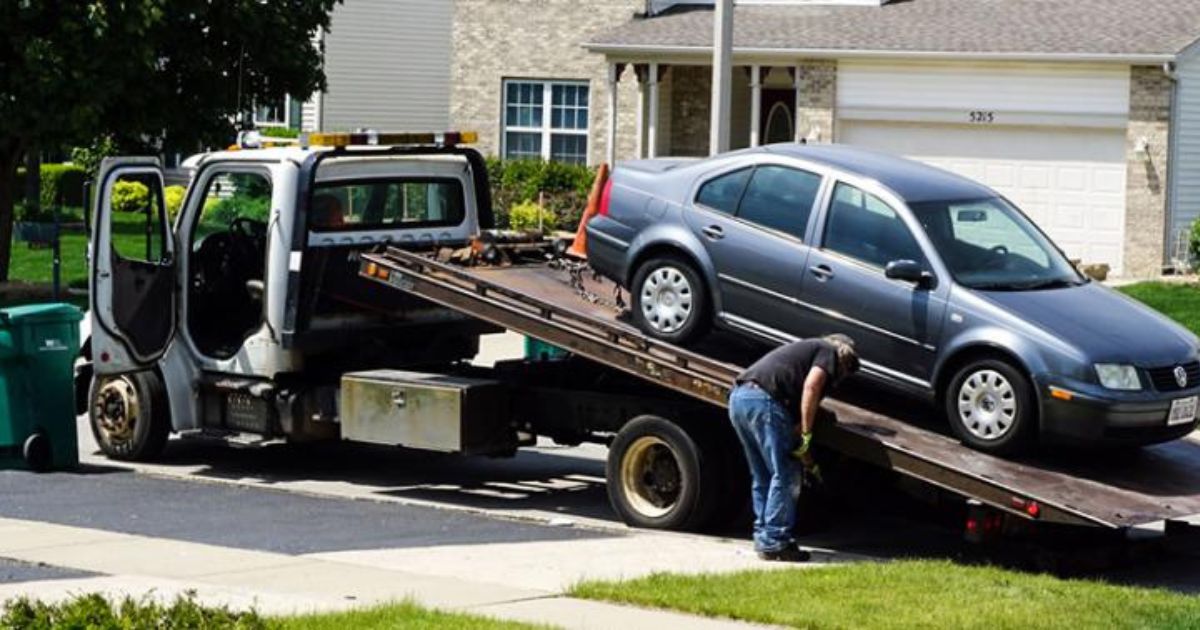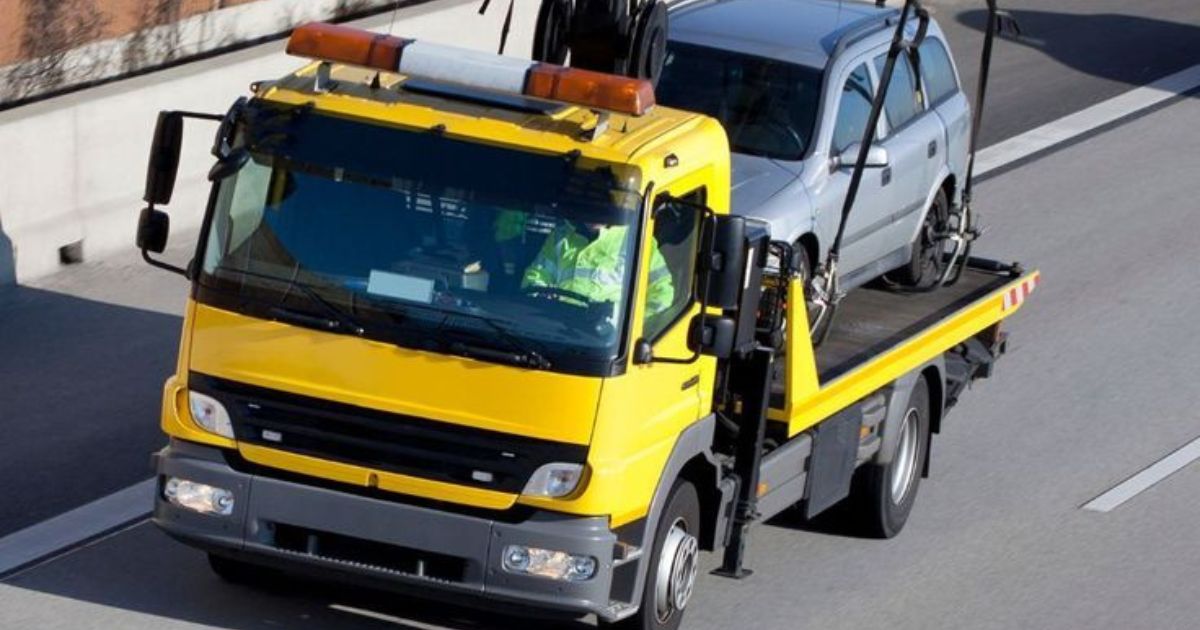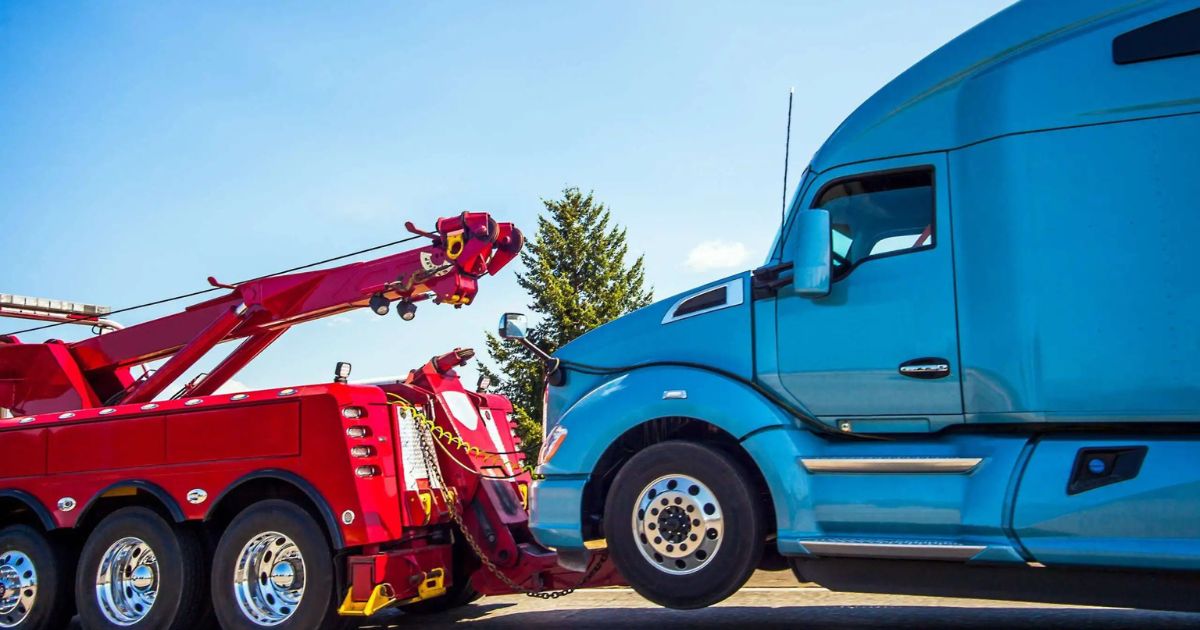Nothing ruins your day like a dead car battery. You wake up, rush to work, or head out for errands, and suddenly your car refuses to start. You panic. You feel stuck. It can take hours to wait till a tow or roadside assistance arrives. However, imagine being able to take charge and know how to jump start a car by yourself? Being able to know the appropriate steps will help save time, avoid stress, and stay safe on the roads in Maryland.
This guide will give you a head start on the self-steps, safety tips, and useful tips in every situation, cold weather, and even the hybrid cars.
This guide will give you a jump start on car yourself steps, safety tips, and practical advice for every situation, from cold weather to hybrid cars. And if things get tricky, remember Ali Towing in Glen Burnie is always ready to help you with fast, professional roadside service.
How to Jump Start a Car by Yourself?
Dead batteries happen to everyone. It can be a light left on overnight, or it can be an old or damaged battery. Knowing how to jump start a car by yourself makes you in charge. You skip the waiting line, save money, and learn to deal with crises.
Here’s why it matters:
- Emergency readiness: You can handle a flat battery anytime.
- Time-saving: No hours of waiting in cold and freezing seasons or under the blazing sun.
- Independence: Stay safe by not trusting random passersby or calling multiple tow services.
Knowing jump-start a car yourself steps ensures you act fast and safely.
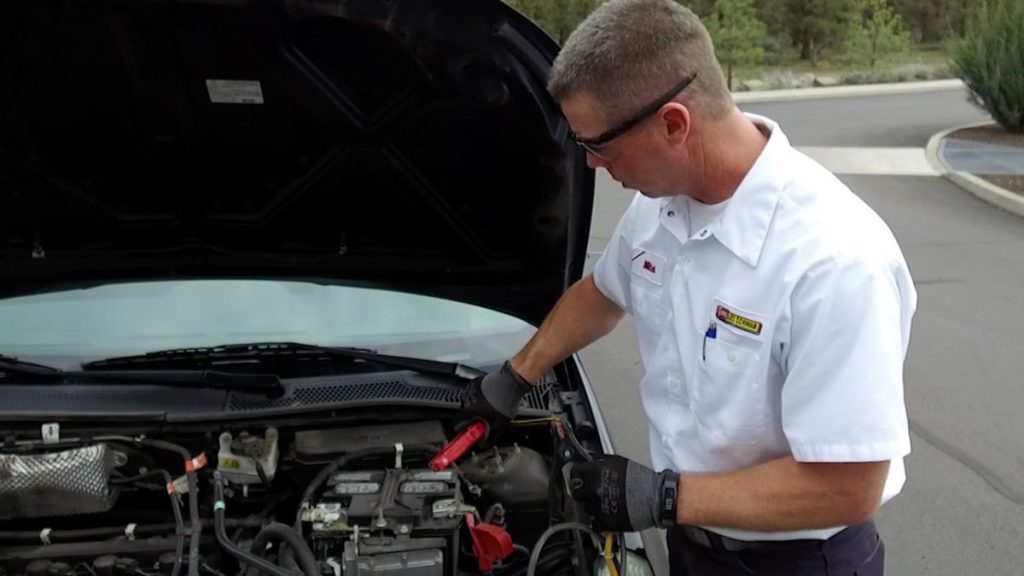
Common Reasons a Battery Dies + Quick Fix
| Reason | Quick Fix |
| Lights left on overnight | Jump-start start car, replace the battery if old |
| Cold weather | Warm battery, use the correct jumper cable steps |
| Faulty alternator | Check the system, call a professional if needed |
| Replace battery | Clean terminals, reconnect securely |
| Old battery | Replace battery |
Tools Needed to Get Started
The correct tools should be collected before you go about trying to jump-start a car. Giving it the right preparation also minimizes risks and accidents, and creates a good experience of jump-starting.
- Tools needed to jump-start a car: This is to jump-start a car using jumper cables, as well as protective gloves and safety glasses to protect your hands and eyes against sparks or battery acid. A flashlight may also aid you when you work in low-light conditions.
- Best portable jump-starter for car: A portable jump starter is extremely useful if no second vehicle is available. To know how to jump start a car by yourself with a portable jump starter, you need to select one that has sufficient peak amperage to jump start your car type and has built-in safety functions such as reverse polarity protection.
- Jump-start car with portable charger: A portable charger is also an easy option over the old jumper cables. It enables you to start your car anywhere without the use of other cars. They should also be careful to follow the instructions given by the manufacturer and make sure that the charger is charged first before it can be used.
The correct equipment guarantees a good, safe jump each time.
How to Safely Jump Start a Car – Step by Step
Knowing how to safely jump-start a car prevents accidents. Follow these jump-start car yourself steps carefully.
Positioning Cars and Preparing the Battery
- Park the cars close, but do not let them touch.
- Switch off the lights and engines.
- Put on safety glasses and gloves.
- Check for battery damage before starting.
What Order to Connect Jumper Cables
The correct connection order is critical when learning how to jump start a car by yourself. First, connect the positive cable to the dead battery’s positive terminal. Then connect the other end to the donor battery’s positive terminal. Next, attach the negative cable to the donor battery’s negative terminal. Finally, connect the last end to a metal surface on the dead car, not the battery. This order prevents sparks, short circuits, and damage.
Jumper Cable Connection Order
| Connection Order | Cable | Connection Point |
| 1 | Red | Dead battery positive (+) |
| 2 | Red | Dead battery positive (+) |
| 3 | Black | Donor battery negative (-) |
| 4 | Black | Donor battery negative (-) |
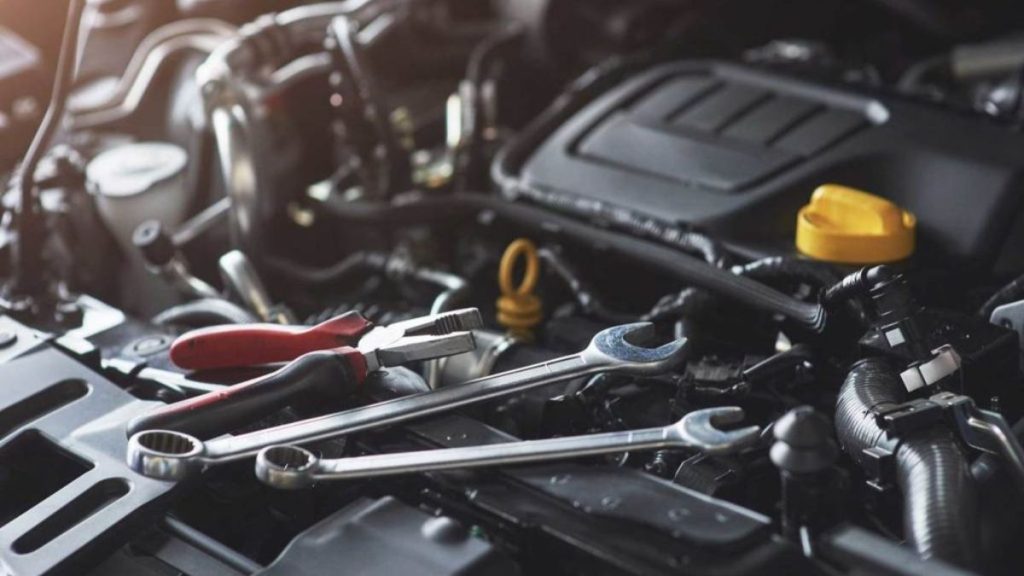
Starting the Engine
- Start the donor car first.
- Let it run 2–3 minutes.
- Try starting the dead car.
- Remove cables in reverse order.
After the Jump – How Long to Run the Car
Once you successfully jump-start, you have to keep your car moving for at least 20 minutes. This enables the battery to completely recharge. You can let the engine idle or drive slowly, as driving helps the alternator charge faster.
Following a quick guide to jump-start start car battery ensures you follow the correct steps. It also demonstrates how to jump-start a car by yourself without any problem. By following these measures, you will not be able to get stuck on the next trip and will have your reliable car again.
Avoiding Risks & Mistakes
An automobile’s electrical system may be harmed by improper jump-starting. It may also ruin the battery or other parts. There’s a real risk of sparks, explosions, or shock. Avoid these errors:
- Common mistakes when jump-starting: Sparks can occur when cables are connected incorrectly. Letting clamps touch may also cause danger. Wrong battery terminal use can short-circuit. This leads to serious vehicle damage.
- Jump-start car safety precautions: First, put on protective gloves and safety glasses. Test the status of the battery prior to starting. Never jump-start if it’s cracked. Avoid batteries that leak or look damaged.
- What not to do when jump-starting a car: Keep cigarettes and a lighter away from the battery of a car. Batteries emit flammable gases, which are ignitable. Have rags, fuel, and other combustibles distant.
- How to avoid sparks when jump-starting: When connecting the negative cable, it is important to always join last. Make sure that connections are good. DO NOT use hands and tools near battery terminals.
Mistakes vs. Safe Practices
| Mistake | Safe Practice |
| Putting cables together incorrectly | Follow the correct positive → negative order |
| Touching clamps together | Keep clamps separate |
| Attempting with a damaged battery | Replace the battery before jumping |
| Smoking near the battery | Avoid flames and sparks |
Special Situations You Should Know
Jump Starting Car in Cold Weather
Cold weather may cause car batteries to break or lose their power quickly. It is good to warm up the battery of a car before attaching the cables when jump-starting a car in cold weather, and following how to jump start a car by yourself. Run the donor car longer in order to charge it adequately. These steps prevent potential stress on the battery and vehicle systems and ensure better adherence to a successful jump start.
Jump Start Car Without Another Vehicle
Use a portable jump starter. Steps:
- Connect positive and negative cables.
- Turn on the jump starter.
- Start the car.
Can You Jump Start a Completely Dead Battery?
Sometimes you might wonder, can you jump-start a completely dead battery? The good news is, in most cases, you can if you know how to jump start a car by yourself. A good donor vehicle or a fully charged portable jump starter will be required of you. Nevertheless, in case the battery is very old, exhausted, or in a very bad condition, a jump start can fail. In that situation, replacement becomes necessary. The first thing is to always examine the status of the battery. So, it makes sure that you are safe in the process.
Jump Starting With a Motorcycle Battery
In emergencies, you can use a motorcycle battery to jump-start a car, but you must be careful. To do this safely, follow how to jump start a car by yourself with a motorcycle battery. Connect the positive terminal to the car’s positive terminal and the negative to a metal ground. Then, run the motorcycle engine for a few minutes before starting the car. Do not touch the clamps, keep a check on the temperature of the battery, and take off the cables in reverse order. Apply the method only in case the car battery is not entirely dead.
Hybrid and Automatic Car
Guidelines on how to jump-start a hybrid car safely consider that the owner’s manuals protect the electronics on the vehicle. While the vehicle is off, place the vehicle in ‘Park’ and start the vehicle to jump. The vehicle’s electric systems must all be turned off before attempting a start, after which the jumper cables must be connected to the appropriate battery terminals. Joint all high voltage and other sensitive areas.
In the same manner as hybrid vehicles, step-by-step instructions on how to jump-start an automatic car are simple. The positive (red) jumper cable is connected to the positive terminal of the run-down battery, and the negative (black) jumper cable is clamped down on a car’s metal surface, which is a ground point. Do not attempt to of an automated transmission vehicle by ‘Roll Starting’ as damage to the transmission may occur.
It’s also important to understand the push start vs jump start differences. Manual transmissions only have a chance of being started by pushing since it is based on the mechanical rotation of the engine. Jump starting, however, is electrically powered by another car or portable charger, and can be used on manual or automatic cars when properly done. These technical measures will help to make sure that the battery gets power safely and without any consequence to the systems of vehicle.
Troubleshooting After the Jump
At other times, DIY is not enough to start up your car. It is also important to make sure that you keep jumper cables or a portable jump starter at all times, just in case of any unexpected battery failure. The steps to be taken how to jump start a car by yourself on the roadside are to make sure that you are noticeable to people and are in a safe place at all times. It is advisable to seek the assistance of professionals when you are not sure or when you are not in control of your situation, as opposed to putting your life at risk or further damaging your car
Emergency & Roadside Help
At other times, DIY is not enough to start up your car. You should also make sure to always have jumper cables or a portable jump starter in case of any unforeseen battery failure. In undertaking a jump start car yourself steps on the roadside, ensure that you are visible to other drivers and that you are in a secure position at all times. When in doubt or when you cannot control your situation, then it is better to call the professionals and have them assist in the situation than run the risk of injuring yourself or causing additional harm to your vehicle.
If your car refuses to start, call (443) 763-7409 Ali Towing in Glen Burnie. We provide 24/7 roadside assistance fast and safely.
Quick Guide Table – Quick Guide to Jump Start Car Battery
| Step | Action | Notes |
| 1 | Gather tools | Gloves, cables, portable jump |
| 2 | Position cars & prepare battery | Keep vehicles apart |
| 3 | Connect cables correctly | Follow positive → negative |
| 4 | Start the donor car, then the dead car | Wait 2–3 min before starting |
| 5 | Remove cables carefully | Reverse order, engine running |
| 6 | Run engine | At least 20 minutes |
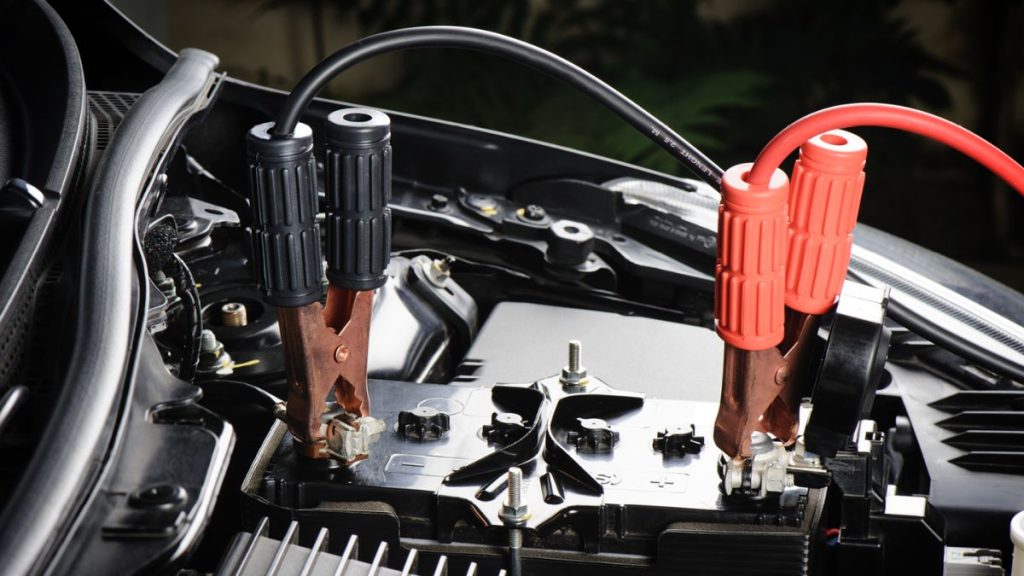
Extra Safety Reminders
- Always wear gloves and glasses: Always protect your hands and eyes against the sparks or battery acid when jumping-starting a car.
- Avoid sparks near the battery: The batteries can leak flammable substances; hence, keep the tools and cables outside the terms.
- Keep children and pets away: Make sure that the place is not messy when you are working.
Following jump-start car safety precautions while learning how to jump start a car by yourself guarantees a safe and easy jump-start each time.
Save Ali Towing’s number (443) 763-7409 now. For emergencies across Maryland and Glen Burnie, we’re just a call away!
FAQs
Q1. Can I jump-start my car by myself?
Yes! With the right tools and safety in mind, you can follow the jump-start start car yourself steps easily. Most car batteries can be revived without outside help.
Q2. Do I need another vehicle to jump-start?
Not always. Without another vehicle, you can safely jump-start your car with a portable jump starter.
Q3. Can I jump-start a hybrid or automatic car?
Yes, but follow specific manufacturer instructions. How to jump-start a hybrid car safely ensures no damage to electronics.
Q4. What order should I connect jumper cables?
Attach positive cables first to both batteries, then negative cables, with the last connection to a metal ground of the dead car.
Q5. What are common mistakes when jump-starting?
Avoid wrong cable order, touching clamps together, sparks near the battery, and using damaged cables. Safety is critical.
Q6. Can a completely dead battery be jump-started?
Sometimes, yes, with a strong donor car or a portable jump starter. If not, replacement may be needed.
Conclusion
Imagine you are running late and your car won’t start. On the other hand, the clock is ticking. You don’t panic and grab your tools and follow the steps you’ve learned with confidence. This is the benefit of knowing how to jump start a car by yourself. You become capable of turning a stressful roadside emergency into a simple, manageable task.
The dead batteries will strike at the worst time possible. It might be the morning chills, or you forgot to turn the lights on. Yet, the knowledge of how to use jumper cables correctly can get you back on the road quite easily. Knowing the common leapfrogging mistakes, you can easily save yourself and your car.
However, there are some situations that do need more professional aid. If the battery is completely dead, your alternator fails, or your car is a hybrid or automatic, DIY methods may not suffice. That’s where Ali Towing comes in. Serving Glen Burnie and throughout Maryland, we offer fast, reliable 24/7 roadside jump-start services. Whether it’s emergency roadside jump start tips or troubleshooting why a car dies after a jump start, our experts get you back on the road safely.
Don’t get stranded on Maryland roads! Call Ali Towing in Glen Burnie anytime at (443) 763-7409 for fast, reliable 24/7 roadside jump start services. Be prepared, stay safe, and get back on the road with confidence.



